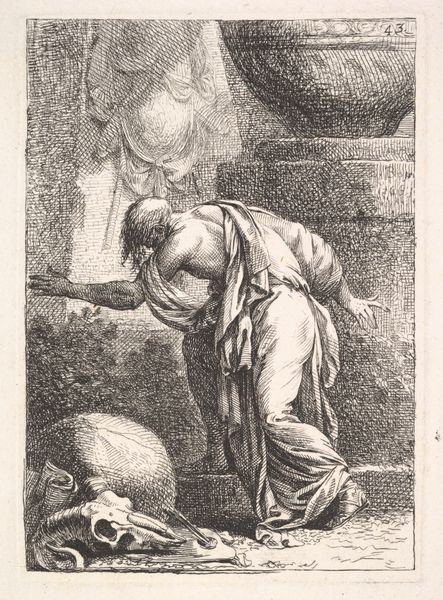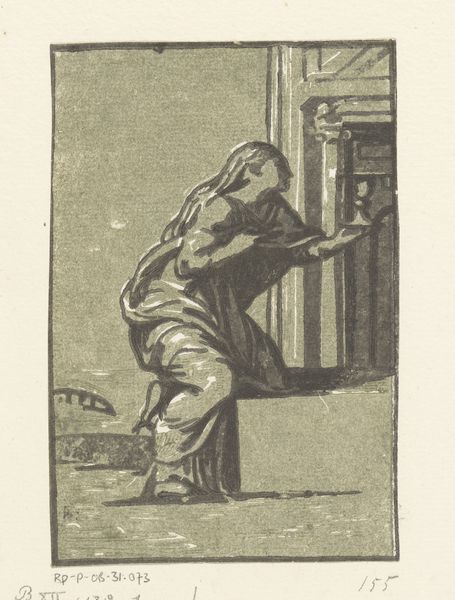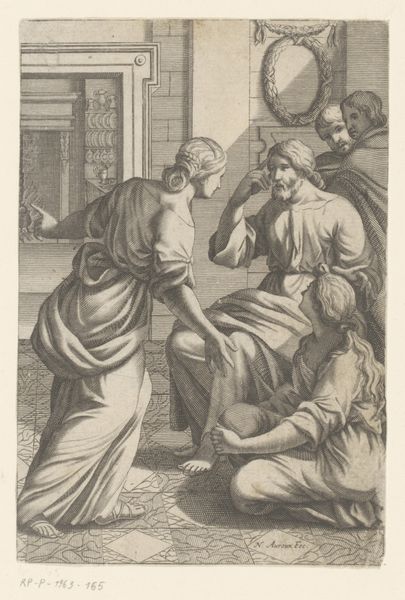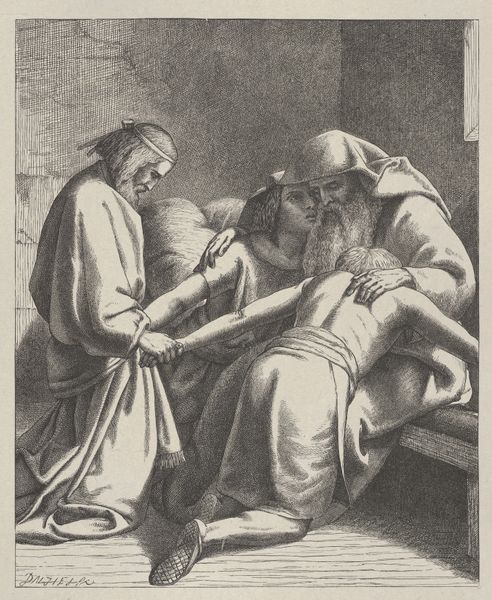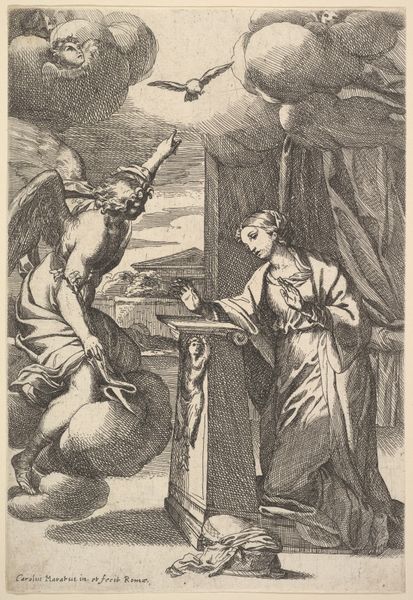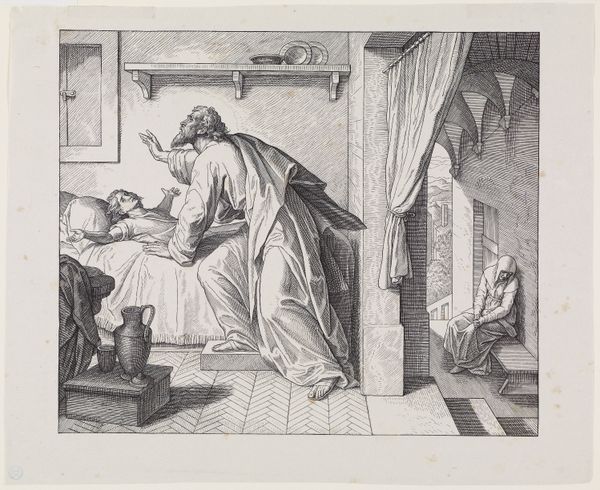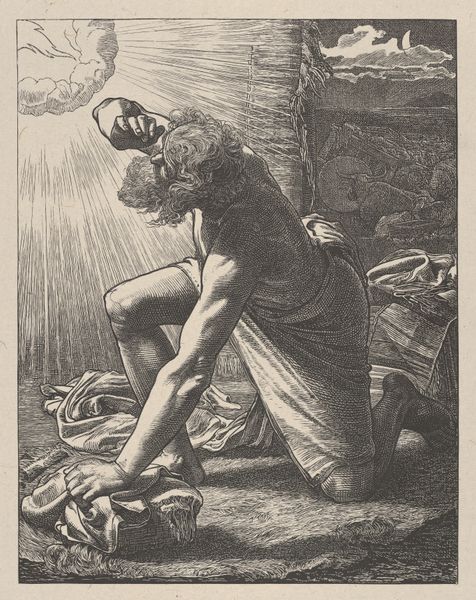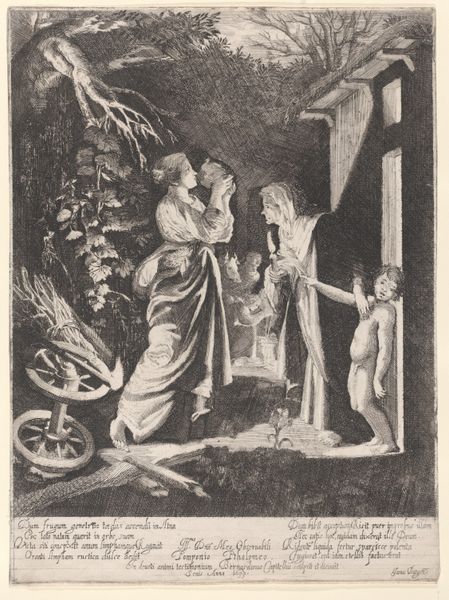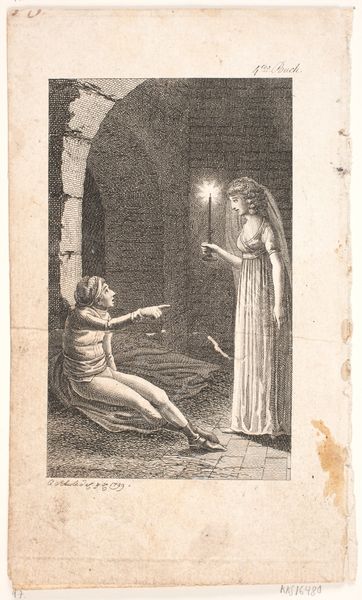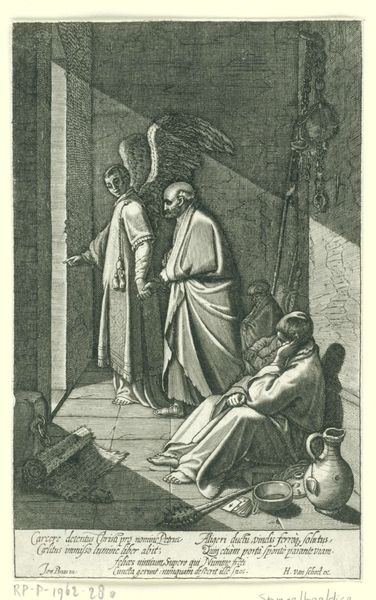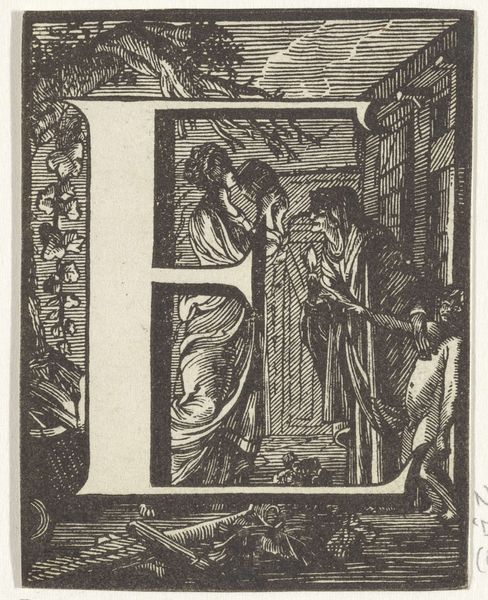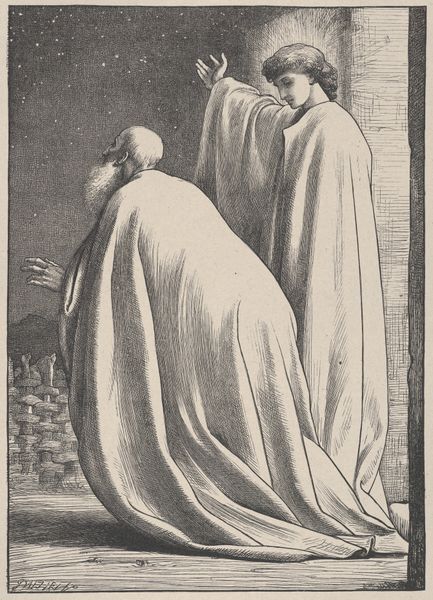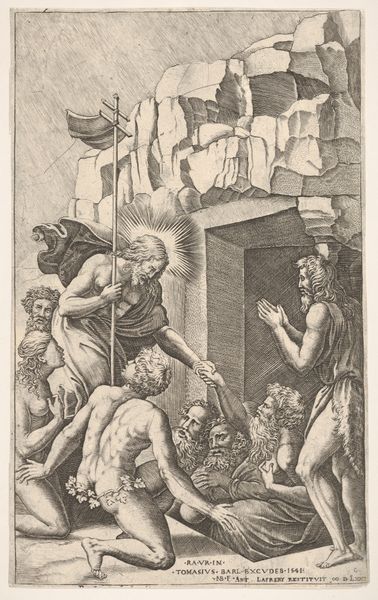
Rahab and the Spies, from "Dalziels' Bible Gallery" 1865 - 1881
0:00
0:00
drawing, print, engraving
#
drawing
#
medieval
#
narrative-art
# print
#
figuration
#
pencil drawing
#
men
#
history-painting
#
engraving
Dimensions: Image: 8 7/16 × 6 15/16 in. (21.4 × 17.7 cm) India sheet:10 9/16 × 8 15/16 in. (26.8 × 22.7 cm) Mount: 16 7/16 in. × 12 15/16 in. (41.8 × 32.8 cm)
Copyright: Public Domain
Editor: This is Frederick Richard Pickersgill's "Rahab and the Spies," an engraving from sometime between 1865 and 1881. The scene feels secretive and tense, especially with the woman guarding the door. What do you make of the symbolic weight in a scene like this? Curator: Consider how Pickersgill employs established visual language. Doors, thresholds – they often signify transitions, don't they? Here, the woman, Rahab, stands at this point of crossing. She's protecting the spies, helping them escape, and in doing so, she’s choosing a new destiny, diverging from her past. Have you considered her gaze? Editor: Yes, she doesn't seem joyful. More… resigned? Is she a reluctant participant? Curator: Perhaps, or maybe she understands the gravity of her actions. Notice the rope near her foot; that specific detail hints at future salvation. Are you familiar with how this moment, hiding the spies, leads to her and her family's deliverance when Jericho falls? Visual elements can carry deep memory. It makes me consider acts of disobedience, rebellion, as acts of great virtue in this moment. Editor: That’s interesting. The rope, then, isn't just an object; it's a promise. And her choice, although heavy, holds immense future value for her kin and others who followed her. Curator: Precisely. These aren't simply figures in a biblical story; they're symbols of courage, betrayal, and ultimately, redemption. That engraving is an example of visual shorthand – a potent concentration of history and promise, working together to trigger collective understanding. It prompts us to contemplate on our actions in relation to shared histories. Editor: I never would have thought to dig into the symbolism that deeply, and to reflect on it in a larger cultural context! Thanks!
Comments
No comments
Be the first to comment and join the conversation on the ultimate creative platform.
